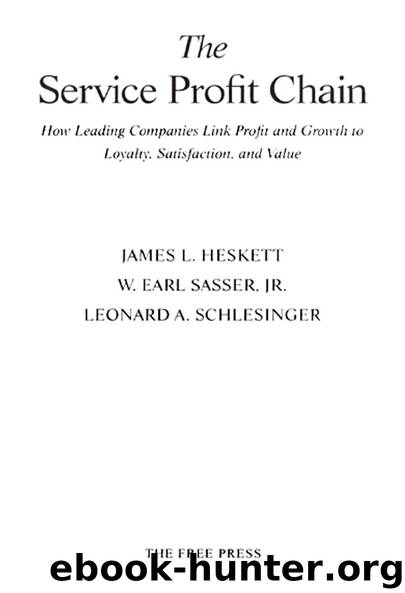The Service Profit Chain by James L. Heskett

Author:James L. Heskett
Language: eng
Format: epub
Publisher: The Free Press
Published: 1997-07-15T00:00:00+00:00
Source: Company files.
Measuring Results. Data from power “interruption reports” provided the basis for measuring the results of the team’s actions. For the first nine months of 1987, as opposed to the same period in the previous year, it showed that power outages caused by vehicles had been reduced by 78 percent. In fact, vehicles had become the seventh most important cause of outages, ranking far below such causes as trees, faulty relay devices, animals finding their way into the equipment, and lightning.
Achieving Standardization. Once it was determined that the team’s actions in relocating poles had indeed been effective and affordable, steps were taken to “achieve standardization,” in effect to preserve the gains by changing the procedures for locating future pole placements, ensuring that the gains achieved could be sustained.
Making Future Plans. What started out as the team dealing with power outages due to lightning had become the team investigating power outages caused by vehicles, with emphasis on (he location of power poles. However, once that problem had been addressed, the team could turn its attention once again to power interruptions caused by lightning and falling trees, the next major causes. This required that it begin the sevenstep improvement process again, but this time with the data and knowledge gained from its previous investigations. Multiplying this one team effort by 1,400 teams provides some idea of the impact that FPL’s quality improvement initiative had on the company’s management process and performance. At its peak, about a thousand quality improvement stories, represented by Storyboards, were being presented to management by such teams. Most were accepted by management for implementation. Acceptance became the occasion for recognition, with most rewards given in the form of merchandise or pins, not money (which, according to many who have experience in these matters, is quickly forgotten). At the same time, employee suggestions of lesser magnitude increased twelvefold, to more than 12,000 per year, between 1981 and 1989. Employee pride, respect, and satisfaction increased as well. 10
The seven steps in FPL’s approach, summarized graphically in Figure 8-2, provided a way of implementing a basic philosophy right out of W. Edwards Deming’s “book,” PDCA, or Plan-Do-Check-Act (plan what to do; carry it out; check what you did; act to prevent error or improve the process, and repeat the PDCA routine). 11 This is characteristic of the simplicity (and memorability) required of all widely adopted concepts.
Download
This site does not store any files on its server. We only index and link to content provided by other sites. Please contact the content providers to delete copyright contents if any and email us, we'll remove relevant links or contents immediately.
Bad Blood by John Carreyrou(5767)
Principles: Life and Work by Ray Dalio(5321)
Rich Dad Poor Dad by Robert T. Kiyosaki(5147)
Management Strategies for the Cloud Revolution: How Cloud Computing Is Transforming Business and Why You Can't Afford to Be Left Behind by Charles Babcock(4129)
The Confidence Code by Katty Kay(3566)
Thinking in Bets by Annie Duke(3530)
American Kingpin by Nick Bilton(2970)
Playing to Win_ How Strategy Really Works by A.G. Lafley & Roger L. Martin(2943)
Delivering Happiness by Tony Hsieh(2922)
Project Animal Farm: An Accidental Journey into the Secret World of Farming and the Truth About Our Food by Sonia Faruqi(2659)
Brotopia by Emily Chang(2591)
I Live in the Future & Here's How It Works by Nick Bilton(2524)
Mastering Bitcoin: Programming the Open Blockchain by Andreas M. Antonopoulos(2509)
The Content Trap by Bharat Anand(2493)
The Power of Habit by Charles Duhigg(2488)
The Marketing Plan Handbook: Develop Big-Picture Marketing Plans for Pennies on the Dollar by Robert W. Bly(2413)
The Tyranny of Metrics by Jerry Z. Muller(2401)
Building a StoryBrand by Donald Miller(2360)
Applied Empathy by Michael Ventura(2327)
